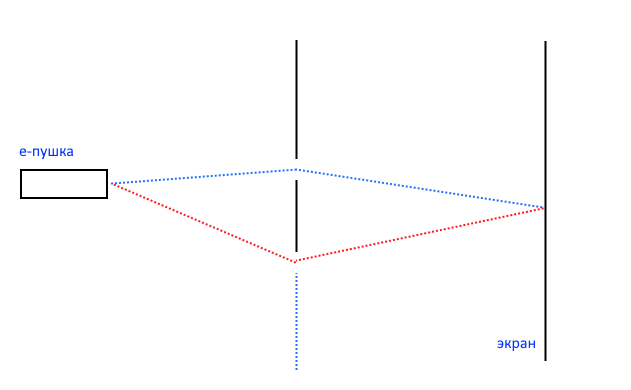Answer the question
In order to leave comments, you need to log in
Why is it impossible to measure the time of flight of a particle in a double-slit experiment?
When describing a double-slit experiment (for example, when single electrons are fired at the slits), it is always said that if the detector is placed in the slit, then the interference disappears.
But if the slits are not symmetrically arranged, then it is possible to determine through which slit this or that electron flies non-invasively, by measuring the time between its departure and hitting the screen (after all, the lengths of the two trajectories are different). What will experience show in this case?

Answer the question
In order to leave comments, you need to log in
If you measure something, even behind the screen, there will be no interference
usually the speed of the particle is already known - it is calculated from the accelerating voltage
Uncertainty relation ΔVΔx ~ ℏ. Those. you cannot know the speed exactly, and this in turn leads to the fact that the time you are talking about has a spread. And if everything is carefully calculated, it turns out that this very uncertainty of time will turn out to be such that it will not allow us to determine through which slit the electron flew. If you contrive to achieve a high accuracy of time measurement, sufficient to determine the gap, then you thereby kill the interference.
Didn't find what you were looking for?
Ask your questionAsk a Question
731 491 924 answers to any question